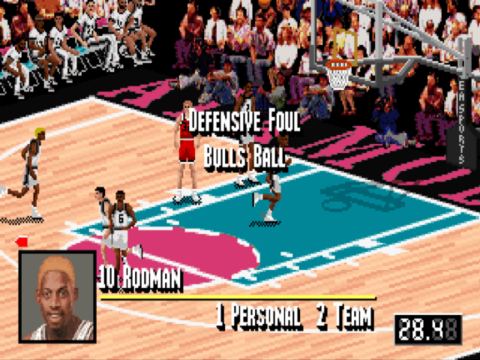
NBA Live 95
Written by: Rik
Date posted: August 23, 2020
- Genre: Sport
- Developed by: Hitmen Productions
- Published by: Electronic Arts
- Year released: 1995
- Our score: 6
While the last 20 years or so may have indoctrinated us into thinking that EA Sports was always a giant behemoth with a stranglehold across all major US sports (and football) with relentless annual releases and a unified corporate branding, that wasn’t, of course, always the case. Once upon a time, for example, they might have released a golf game and a sequel to that golf game without it necessarily being the start of a multi-year franchise. Hence names like PGA Tour 486, a title that doesn’t naturally lend itself to annual updates, with PGA Tour 487 and PGA Tour Pentium P60 sadly never seeing release [you’ve done that joke already, and also this joke about doing the other joke already, already – Ed].
NBA Live 95 had more potential for seasonal updates by virtue of the inclusion of a year in its name, although I’m convinced the rhyming of ‘live’ and ’95’ was a deliberate choice and the original intent was lost with subsequent instalments: NBA Live 96 is like calling the third instalment of a successful movie franchise 3 Fast 3 Furious: you can still tell what it is from the title, but a certain something has been lost.
Coincidentally, NBA Live 95 and PGA Tour 486 were both developed by Hitmen Productions, and even without much sense of overarching EA Sports branding, there’s a recognisable sheen to the presentation and menus common to both games. However, this time, instead of a handful of 90s golfers, you’ve got the entire NBA (minus one or two players, including Charles Barkley and Michael Jordan). EA had tried basketball a few times previously, first with the NBA Playoffs series, and then NBA Showdown (the latter of which was released on consoles only) but on PC, this was their first attempt at bringing you the full NBA experience with all teams featured. I wrote elsewhere about how the NBA seemed to catch fire in the UK during the mid-90s and it was that excitement, along with the extra polish and razzmatazz seemingly offered up by NBA Live 95, that ensured it would receive more attention than most previous US sporting titles.In particular, the amount of official licensing was exciting to UK gamers who were used to the fairly low budget treatment that our national game of football tended to receive. While some games may have featured real player names and approximations of the correct kits, things like actual club badges, team histories, detailed statistics, and player photos seemed a long way off. (Arguably, there wouldn’t be a title that paid a similar amount of attention to the Premier League until the short-lived Premier League STARS franchise arrived at the end of the 90s). Here, the novelty of the presentation at the time almost made it seem like a combination of an electronic CD-ROM sports annual and a game.
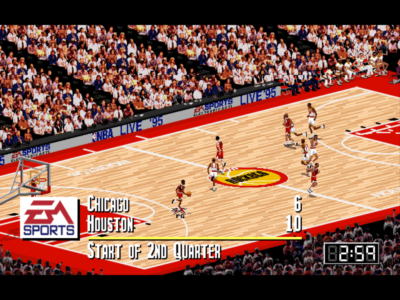
[SVGA] Yes, I played as the Chicago Bulls. Just like US soccer fans playing FIFA as Manchester United or Arsenal.
Thankfully, in our complacent future, society may be collapsing all around us, but we do at least have better computers and bigger monitors to finally render this mode playable. Not only does this mean it still looks pretty good, this mode also enables you to see more of the court at once, which is an all-round help while playing, although arguably the action is possibly still on the small side.
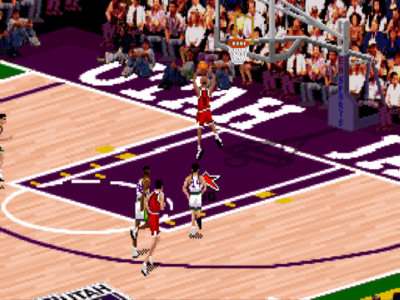
[VGA] There’s a slow-motion effect on dunks, which is quite cool, but you can turn it off if you don’t agree.
It’s also pretty obvious from the outset that this is running on some version of the FIFA engine, with all of its attendant problems, most notably the issues caused by the isometric angle in terms of seeing the action at the bottom half of the court. The same slightly stiff running motion and drifty movement are also noticeable although much less of an issue here than in FIFA. And otherwise, it deals quite well with a lot of players in a small area with some precision, and the way the players automatically protect and move with the ball when in close proximity to an opponent all looks very natural and well done. There are also some quite cool little animations, for example the understated but noticeable pointing celebration, and the way players shake themselves off after a foul.
This being a 90s game, the control scheme is very simple, although it’s one that really needs three buttons but like so many DOS-based arcade games has to fudge it slightly due to the two button standards of the time. On a stick or pad, it’s one button to pass and the other to shoot, while ‘turbo’ (i.e. running faster) is either accommodated via the analogue stick, with variable results, or by a combination of both other buttons (a frankly insane option). Alternatively, you can switch to keys. Defensively, it’s about getting close (but not too close) to your opponents, switching between players with the pass button and pressing shoot to jump and block, or pick up rebounds.
Despite, or perhaps partly because of, the simplicity, NBA Live 95 certainly gave me the opportunity to develop a better understanding of the game, coming from the NBA Jam mentality of hyper-aggressive shoving as the main method of defence, and viewing basketball as as an end to end score-fest. (Fouls are a possibility, by turbo-ing into an opponent and sending them flying in an amusing fashion, but this isn’t NBA Jam and, if you turn all the rules up, it’s definitely something to avoid. At times I was frustrated there was no more direct and violent method of fouling, equivalent to a reckless slide tackle in football, but there you go.)I stuck all of the rules on and played at the middle of the 3 available difficulty levels, but – full disclosure – I set strategy to automatic. Leaving that aside, the subtleties of a game of basketball otherwise became more apparent to me: from showing patience in defence, making sure players are picked up, and timing jumps to blocks and rebounds, to managing the game while ahead and not getting too desperate when behind. Players have a reasonable amount of detail for the time, with different heights and player numbers helping you identify individuals (plus famous accessories like Horace Grant’s goggles and Dennis Rodman’s hair, which changes from match to match, also feature). Like all of the best sports games, players’ personalities come through during extended periods of play with the same team.
In-game criticisms are limited, beyond the visual problems and occasional lack of polish already noted above: the ball lingers on the rim a little too frequently, and there’s a well-documented glitch with opponent AI where they pursue a ruinous strategy to attempt 3 pointers at all costs if they find themselves a long way behind. What sort of harms NBA Live 95‘s longevity is the vanilla state of the season option, typical of the era, with no multiple seasons or sophisticated trading options (you can just trade as you like, i.e. freely move players from one team to another, but that’s not really a meaningful feature when there are no stakes attached), combined with the fact that basketball seasons are really, really long. I didn’t know this, but 82 games is the real-life equivalent, and that’s just the regular season, without playoffs, although you can adjust to 52 or 26 if you so wish. (As an aside, during the season, the stats for other teams are all based around playing full-length 40 minute matches, so your side’s will look puny if you choose a sensible match length). I mean, people go on about a Test Match lasting for 5 days in cricket, but playing 82 games without even declaring a winner? And you can be the best team across those 82 games only to get dumped out by a maverick opponent in the playoffs?
Anyway, in many ways NBA Live 95 has aged very well. As you can probably tell, I’m not very knowledgeable about basketball, but as far as I can see, this seems to have dated much better than most football games of a similar vintage, and certainly much better than the first FIFA game. For a while, I was really into it, and happily ploughed through a 52 match regular season, plus playoffs, but my enthusiasm for going through it all again with a different team lasted about as long as it did to confirm that the highest difficulty setting was noticeably more challenging than the middle one, but not impossible. That’s par for the course with 90s sports games, I guess, and doesn’t stop this one from providing an enjoyable and authentic slice of 90s basketball action.

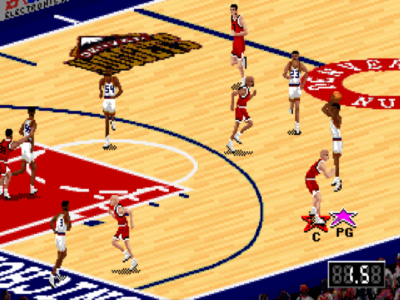
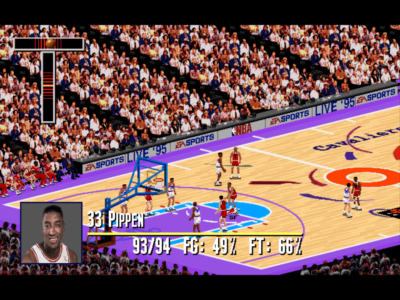
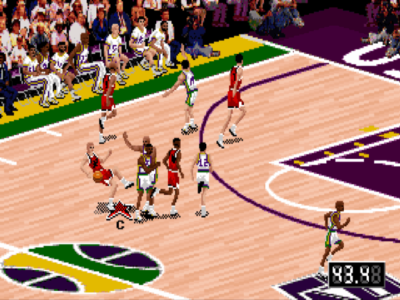

 Posts
Posts